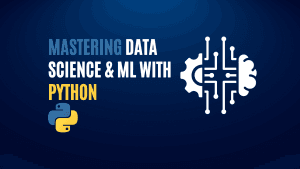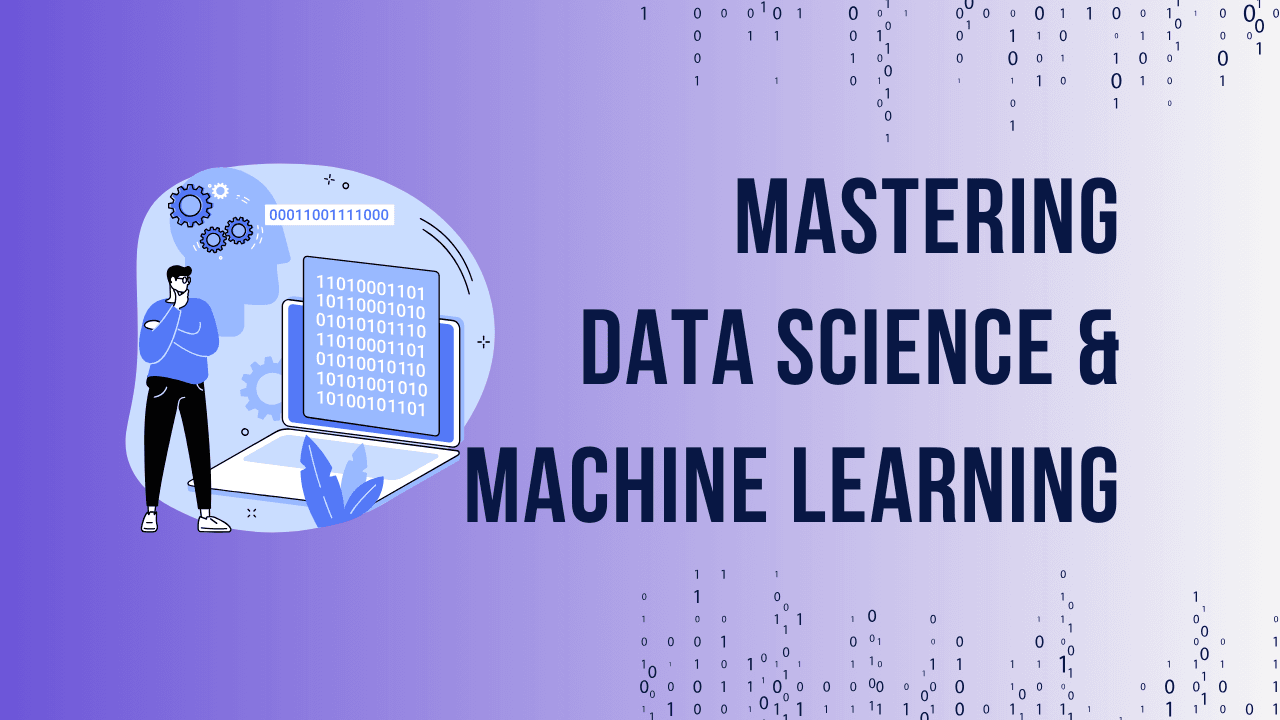Table of Contents
Toggle1. What is Data Science?
Data Science is a field that combines domain expertise, programming skills, and knowledge of statistics and mathematics to extract meaningful insights from data. It involves the process of collecting, cleaning, analyzing, and interpreting complex data to drive decision-making.
2.What are the key differences between supervised and unsupervised learning?
- Supervised learning: Involves labeled data where the algorithm learns from input-output pairs (e.g., classification, regression).
- Unsupervised learning: Deals with unlabeled data where the model identifies hidden patterns or structures in data (e.g., clustering, dimensionality reduction).
Ready to take you Data Science and Machine Learning skills to the next level? Check out our comprehensive Mastering Data Science and ML with Python course.
3. Explain the steps of a data science project.
- Problem Understanding: Identify the business problem and objectives.
- Data Collection: Gather the relevant data.
- Data Cleaning: Handle missing values, outliers, and inconsistencies.
- Exploratory Data Analysis (EDA): Analyze data patterns and relationships.
- Feature Engineering: Transform raw data into useful features.
- Modeling: Choose algorithms, train models, and validate performance.
- Evaluation: Test models using metrics like accuracy, precision, recall, etc.
- Deployment: Implement the solution into production.
3. Explain the steps of a data science project.
- Problem Understanding: Identify the business problem and objectives.
- Data Collection: Gather the relevant data.
- Data Cleaning: Handle missing values, outliers, and inconsistencies.
- Exploratory Data Analysis (EDA): Analyze data patterns and relationships.
- Feature Engineering: Transform raw data into useful features.
- Modeling: Choose algorithms, train models, and validate performance.
- Evaluation: Test models using metrics like accuracy, precision, recall, etc.
- Deployment: Implement the solution into production.
4. What is overfitting and how do you prevent it?
Overfitting occurs when a model learns the noise and patterns specific to the training data, performing poorly on new, unseen data.
Prevention Techniques:- Use cross-validation.
- Apply regularization (e.g., L1, L2).
- Prune decision trees.
- Use dropout in neural networks.
- Limit model complexity.
5. What are precision and recall?
- Precision: The ratio of true positive predictions to the total positive predictions made by the model. It measures the accuracy of the positive predictions.
- Recall: The ratio of true positive predictions to the total actual positive values. It measures how well the model identifies all relevant cases.
6. What is the bias-variance tradeoff?
The bias-variance tradeoff refers to the balance between two sources of error in a model:
- Bias: Error due to overly simple models that do not capture the underlying data patterns.
- Variance: Error from models that are too complex and sensitive to the noise in the training data. An ideal model minimizes both bias and variance.
7. Explain cross-validation.
Cross-validation is a technique to evaluate the performance of a machine learning model by dividing the dataset into multiple subsets. The model is trained on a subset and tested on the remaining data. The most common method is k-fold cross-validation, where the dataset is divided into k subsets, and the model is trained k times, each time using a different subset for testing.
8. What are some common algorithms used in data science?
- Linear Regression
- Logistic Regression
- Decision Trees
- Random Forests
- Support Vector Machines (SVM)
- K-Nearest Neighbors (KNN)
- K-Means Clustering
- Principal Component Analysis (PCA)
- Neural Networks
9.How do you handle missing data in a dataset?
- Removing rows with missing values if the data loss is minimal.
- Imputation using statistical methods (mean, median, or mode).
- Use advanced techniques like K-Nearest Neighbors (KNN) imputation or predictive models.
- Label missing data as a separate category if it is informative.
10. Explain the concept of regularization.
- Removing rows with missing values if the data loss is minimal.
- Imputation using statistical methods (mean, median, or mode).
- Use advanced techniques like K-Nearest Neighbors (KNN) imputation or predictive models.
- Label missing data as a separate category if it is informative.
Ready to take you Data Science and Machine Learning skills to the next level? Check out our comprehensive Mastering Data Science and ML with Python course.



